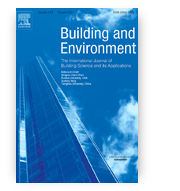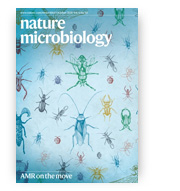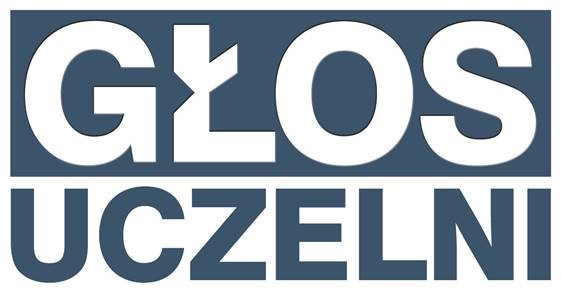
Research papers of the month – October 2021
We present the highest-score research papers of October 2021. These papers were published in journals with the highest Impact Factor − Q1, according to Scimago Journal Rank and Journal Citation Reports by Clarivate.
Rengin Aslanoğlu, Jan Kazak, Sepideh Yekanialibeiglou, Piotr Pracki, Begüm Ulusoy
An international survey on residential lighting: Analysis of winter-term results
Rengin Aslanoğlu, Jan Kazak, Sepideh Yekanialibeiglou, Piotr Pracki, Begüm Ulusoy
Building and Environment
Ministerial score = 200.0
JIF Impact Factor (2020) = 6.456 (Q1)
 By conducting an international survey on residential lighting, a great variety of data showing the differences and similarities in lighting conditions among Poland, Turkey, Sweden and the U.K. were collected which provided an overall perspective for raising the standards of luminous environments. A total of 500 participants (125 respondents from each country- 47.6% females, 51.2% males, and 1.2% who did not wish to specify gender) provided detailed self-assessments of the lighting conditions in their living areas. The study identified interrelated factors associated with residential lighting using descriptive statistics, correlation coefficient functions and thematic analysis. As the survey results showed, the satisfaction with daylighting quality depends on daylighting sufficiency, daylighting uniformity, and number of sunlight hours (i.e., sunlight exposure), view-out and ratio of windows in the living area. Moreover satisfaction with artificial lighting quality depends on artificial lighting sufficiency, artificial lighting uniformity, artificial lighting brightness, and artificial lighting color rendering index. Overall, the findings of the study showed the potential factors that can be used to effectively change the day- and artificial lighting in residential areas, leading to a sustainable and better lighting environment.
By conducting an international survey on residential lighting, a great variety of data showing the differences and similarities in lighting conditions among Poland, Turkey, Sweden and the U.K. were collected which provided an overall perspective for raising the standards of luminous environments. A total of 500 participants (125 respondents from each country- 47.6% females, 51.2% males, and 1.2% who did not wish to specify gender) provided detailed self-assessments of the lighting conditions in their living areas. The study identified interrelated factors associated with residential lighting using descriptive statistics, correlation coefficient functions and thematic analysis. As the survey results showed, the satisfaction with daylighting quality depends on daylighting sufficiency, daylighting uniformity, and number of sunlight hours (i.e., sunlight exposure), view-out and ratio of windows in the living area. Moreover satisfaction with artificial lighting quality depends on artificial lighting sufficiency, artificial lighting uniformity, artificial lighting brightness, and artificial lighting color rendering index. Overall, the findings of the study showed the potential factors that can be used to effectively change the day- and artificial lighting in residential areas, leading to a sustainable and better lighting environment.
DOI:10.1016/j.buildenv.2021.108294
A regulatory cascade controls Staphylococcus aureus pathogenicity island activation
Andreas F. Haag, Magdalena Podkowik, Rodrigo Ibarra-Chávez, Francisca Gallego del Sol, Geeta Ram, John Chen, Alberto Marina, Richard P. Novick, José R. Penadés
Nature Microbiology
Ministerial score = 200.0
JIF Impact Factor (2020) = 17.745 (Q1)
 Staphylococcal pathogenicity islands (SaPIs) are a family of closely related mobile chromosomal islands that encode and disseminate the superantigen toxins, toxic shock syndrome toxin 1 and superantigen enterotoxin B (SEB). They are regulated by master repressors, which are counteracted by helper phage–encoded proteins, thereby inducing their excision, replication, packaging and intercell transfer. SaPIs are major components of the staphylococcal mobilome, occupying five chromosomal att sites, with many strains harbouring two or more. As regulatory interactions between co-resident SaPIs could have profound effects on the spread of superantigen pathobiology, we initiated the current study to search for such interactions. Using classical genetics, we found that, with one exception, their regulatory systems do not cross-react. The exception was SaPI3, which was originally considered defective because it could not be mobilized by any known helper phage. We show here that SaPI3 has an atypical regulatory module and is induced not by a phage but by many other SaPIs, including SaPI2, SaPIbov1 and SaPIn1, each encoding a conserved protein, Sis, which counteracts the SaPI3 repressor, generating an intracellular regulatory cascade: the co-resident SaPI, when conventionally induced by a helper phage, expresses its sis gene which, in turn, induces SaPI3, enabling it to spread. Using bioinformatics analysis, we have identified more than 30 closely related coancestral SEB-encoding SaPI3 relatives occupying the same att site and controlled by a conserved regulatory module, immA–immR–str′. This module is functionally analogous but unrelated to the typical SaPI regulatory module, stl–str. As SaPIs are phage satellites, SaPI3 and its relatives are SaPI satellites.
Staphylococcal pathogenicity islands (SaPIs) are a family of closely related mobile chromosomal islands that encode and disseminate the superantigen toxins, toxic shock syndrome toxin 1 and superantigen enterotoxin B (SEB). They are regulated by master repressors, which are counteracted by helper phage–encoded proteins, thereby inducing their excision, replication, packaging and intercell transfer. SaPIs are major components of the staphylococcal mobilome, occupying five chromosomal att sites, with many strains harbouring two or more. As regulatory interactions between co-resident SaPIs could have profound effects on the spread of superantigen pathobiology, we initiated the current study to search for such interactions. Using classical genetics, we found that, with one exception, their regulatory systems do not cross-react. The exception was SaPI3, which was originally considered defective because it could not be mobilized by any known helper phage. We show here that SaPI3 has an atypical regulatory module and is induced not by a phage but by many other SaPIs, including SaPI2, SaPIbov1 and SaPIn1, each encoding a conserved protein, Sis, which counteracts the SaPI3 repressor, generating an intracellular regulatory cascade: the co-resident SaPI, when conventionally induced by a helper phage, expresses its sis gene which, in turn, induces SaPI3, enabling it to spread. Using bioinformatics analysis, we have identified more than 30 closely related coancestral SEB-encoding SaPI3 relatives occupying the same att site and controlled by a conserved regulatory module, immA–immR–str′. This module is functionally analogous but unrelated to the typical SaPI regulatory module, stl–str. As SaPIs are phage satellites, SaPI3 and its relatives are SaPI satellites.
DOI:10.1038/s41564-021-00956-2










